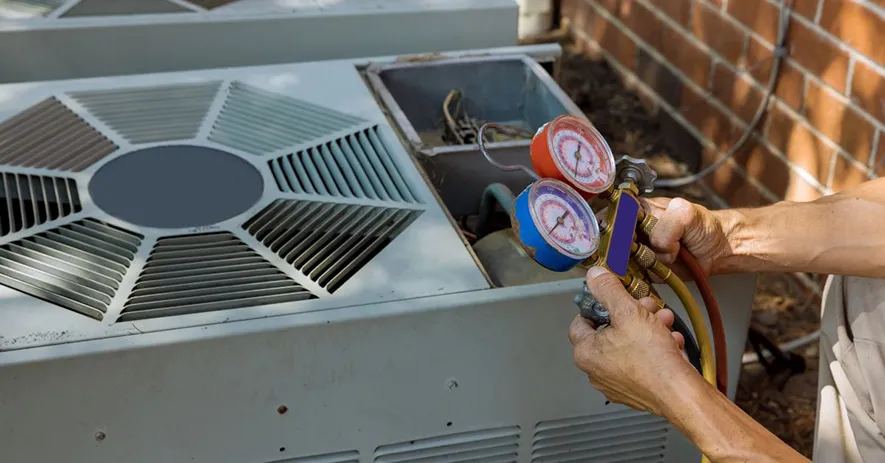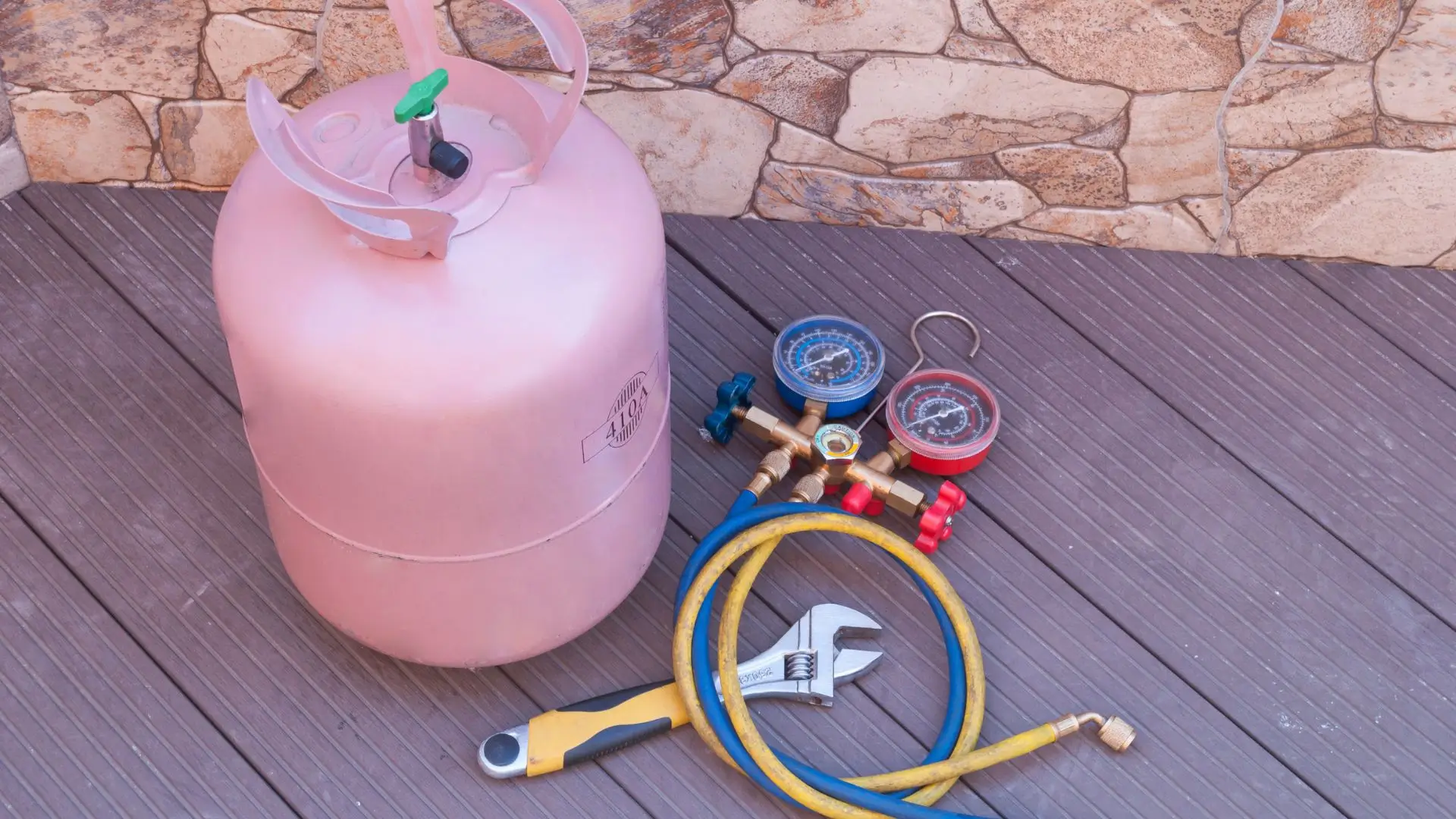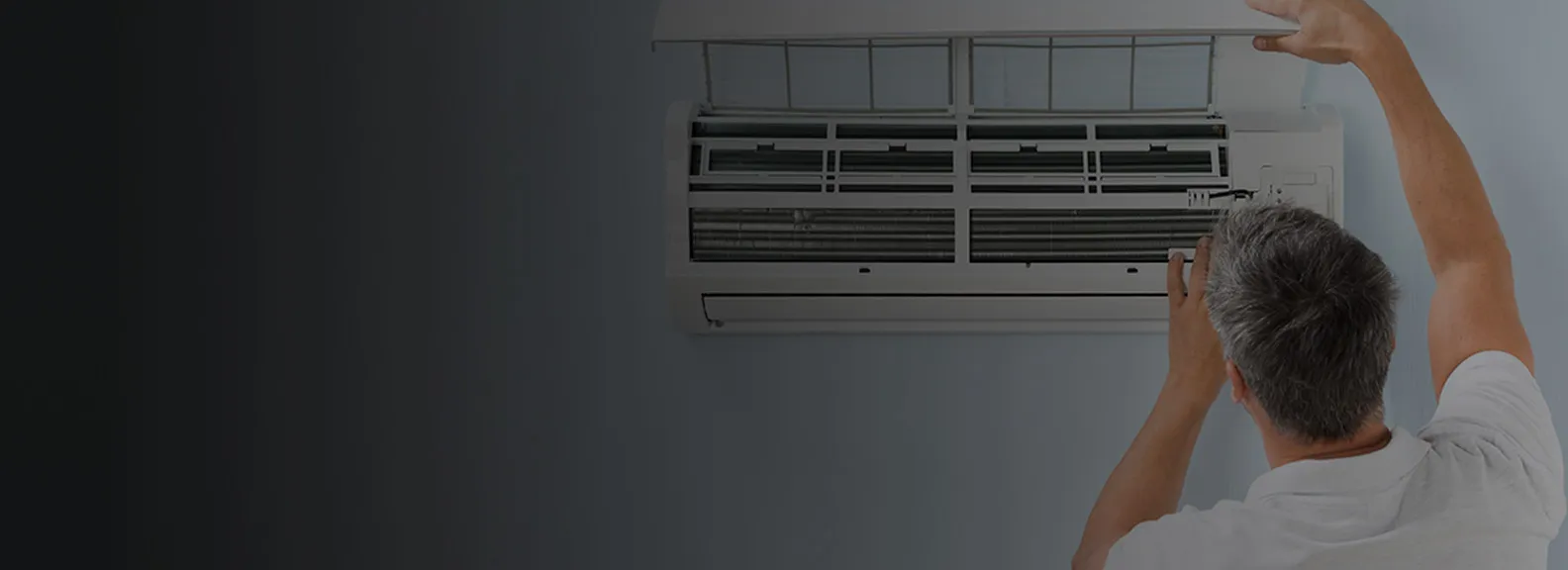Sometimes, heat pumps can malfunction. Usually, they can get back on track by themselves, but if it produces cold air for long periods when it should be producing hot air, this is a sign that something’s wrong.
But what is happening? Why is your heat pump not blowing hot air?
In this article, we’ll be covering the possible causes of your heat pump’s malfunction, as well as how you can fix it!
How Does a Heat Pump Produce Hot or Cold Air?
Before you can understand how a heat pump could blow hot air when it should be blowing cold air, you first need to understand how a heat pump works.
Despite its name, a heat pump system can blow warm and cold air depending on its settings.
This makes heat pumps great appliances to have, considering that they’re both a gas furnace and an air conditioner in one.
The process is similar for both heating and cooling, but there are significant differences, so we’ll cover each process in more detail below.
How Do Heat Pumps Produce Cold Air?
When it comes to producing cool air, heat pumps work very similar to an air conditioner.
The process involves four simple steps:
- Liquid refrigerant moves through the indoor coils and absorbs heat from the air inside your home.
- The evaporated refrigerant goes through a compressor and gets pressurized back into a gas.
- The pressurization creates heat, which is released through the outdoor unit.
- The outdoor coils serve as condenser coils and cool the refrigerant back into a liquid.
The result is cool air for your home!
How Do Heat Pumps Produce Warm Air?
On the other end of the spectrum, many heat pumps are used primarily to blow hot air into a home.
The process is basically the opposite of a heat pump producing cool air:
- Liquid refrigerant moves through the outdoor coils, which serve as evaporator coils, and absorbs heat from the outdoor air.
- The evaporated refrigerant goes through a compressor and gets pressurized back into a gas.
- The heat from pressurization gets released through the indoor coils.
- The indoor coils serve as the condenser coils and cool the refrigerant back into a liquid.
And that’s how a heat pump produces hot air for your home, even if the outside air is cold!
Why Is My Heat Pump Not Blowing Hot Air?
Now that you know how a heat pump works, it’s time to look at why heat pumps tend to malfunction.
In general, there are eight common causes of a malfunctioning heat pump system:
- Clogged air filter
- Low refrigerant charge
- Outside unit not working
- Incorrect thermostat settings
- Dirty coils
- Bad reversing valve
- Malfunctioning auxiliary heat
- Your body temperature
Read on to learn the specifics of each potential cause!
Clogged Air Filter
A dirty air filter is one of the most common causes of a heat pump not blowing hot air.
As you probably know, an air filter is a little device inside your heat pump system whose job is to filter out dust, allergens, and other pollutants that come from the outside air.
However, over time, this air filter can get clogged with all the dirt it traps.
When this happens, it can block the airflow in your heat pump, causing the air coming from the outdoor unit to lose its heat before it gets into your house.
But don’t worry! The solution for this is very simple, thankfully.
If you have a disposable air filter, simply throw out the dirty air filter and install a new one.
If you have a reusable air filter, take it out, clean it thoroughly, and place it back in your heat pump.
Low Refrigerant Charge
Another potential cause for your heat pump not producing hot air is a low refrigerant charge.
As we mentioned above, refrigerant is used to absorb and release heat, making it an essential part of the heating process.
Because of this, your heat pump requires a minimum refrigerant charge to do its job properly. Refrigerant charge refers to the amount of refrigerant in your heat pump system.
However, if you have a refrigerant leak, your heat pump may eventually reach a point where it doesn’t have enough refrigerant to provide your home with enough heating.
With a severe leak, the low refrigerant levels could get to a point where they provide as much heat as a cup of hot water.
To fix this, you must first find out where the leak comes from. Once you find the source, contact a professional to patch up the leak.
Outside Unit Not Working Properly
Sometimes, the cause is less obvious because it comes from the outside unit.
Check the outside unit if the indoor unit is working fine.
The first thing you want to check for is any damage to the outdoor unit, which debris blown about by the wind may have caused.
If it seems there’s no damage to the outdoor unit, then the problem may be a tripped circuit breaker. This would mean that the outdoor unit has no power.
To check if this is the problem, look at the breaker box and check if the circuit breaker for the outdoor unit was tripped.
If it was, reset it so that power is restored to the outdoor unit.
You will need a professional to diagnose the issue if it wasn't.
Incorrect Thermostat Settings
Sometimes, the problem is as simple as the wrong temperature on your thermostat.
This is an easy issue to check. Simply look at the set temperature and judge if it matches the temperature of the air coming out of the heat pump.
It’s usually best to wait for a few cycles, just in case your heat pump has trouble producing hot air – especially if the outside air is extremely cold.
If the air coming out of your heat pump is still not as warm as it should be, then check if your heat pump is in defrost mode.
Defrost mode causes your heat pump system to blow cold air so that the outdoor coils will heat up, causing them to melt any frost they’ve collected.
If your heat pump isn’t set to defrost mode, then the problem could be more complex and need the expertise of a technician.
Dirty Coils
A common cause of heat pumps not producing warm air is dirty coils.
Typically, an evaporator coil is used to absorb heat from the air. As you know, by absorbing heat, the refrigerant inside the coil evaporates and cools the air around the coil.
On the other hand, a condenser coil transfers heat from the refrigerant's compression to the air around the coil.
However, over time, these coils can collect dust and other debris, making it impossible for the refrigerant to absorb heat or transfer heat to the air around the coil.
In this case, you will have to clean the coils properly and ensure there is enough space around the coils for proper ventilation.
Bad Reversing Valve
If you have no idea what might be causing your heat pump to blow warm air, the problem might be the reversing valve.
A reversing valve is in charge of changing the flow of the refrigerant. This allows you to switch from heating to cooling, which is especially useful during summer.
Therefore, if you have valve problems, your heat pump may have trouble switching from cooling mode to heat mode
If this is the case, you will need the reversing valve repaired or replaced.
Malfunctioning Auxiliary Heat
During extremely cold months, your heat pump sometimes needs help creating enough heat for your whole home.
When this happens, it draws upon the auxiliary heat, otherwise known as the emergency heat. This is typically fueled by electric resistance heating or a gas furnace.
Auxiliary heat typically kicks in automatically when the heat pump senses it’s not producing enough heat to match the desired temperatures.
There should also be an aux heat setting on your thermostat if you feel there isn’t enough heat.
However, if the aux heat isn’t working, your heat pump won’t be able to keep up with the demands of your home.
In this case, you will need to have the aux heat checked by a professional.
Your Body Temperature
Finally, it could just be the temperature of your body that makes you feel like your heat pump isn’t producing enough hot air!
This is because human body temperature is typically 98 degrees Fahrenheit, and most heat pumps produce air from 85 to 93 degrees Fahrenheit.
Because of this difference, the warm air can sometimes feel cool to us, even though our home is being heated properly.
How Can I Get My Heat Pump Back to Blowing Warm Air
So how can you get your heat pump working normally again?
Of course, you could try DIY-ing the repair, but you could make things worse if you don’t know what you’re doing.
In general, the best way is to contact a professional technician for heat pump repair if the issue isn’t easily fixed by simple cleaning.
Book an Appointment with Sunset Heating & Cooling Electrical Today!
Here at Sunset Heating & Cooling Electrical, we have technicians with the skill, knowledge, and experience to install, replace, and repair your furnaces in a jiffy!
So what are you waiting for? Book an appointment with us on our website!
Services
- Furnace repair
- Furnace replacement
- Furnace installation
- Heater repair
- Heater installation
- Heater replacement
- Heat pump repair
- Thermostat servicing
- Air conditioning repair & maintenance
- Air conditioner installation & replacement
Contact Us
(503) 500-5866
Service Areas
We serve Portland, Oregon, as well as surrounding areas.
Address
607 S Idaho St, Portland, OR 97239
Business Hours
Monday to Friday: 8 AM to 7 PM
Saturday and Sunday: 8 AM to 5 PM







